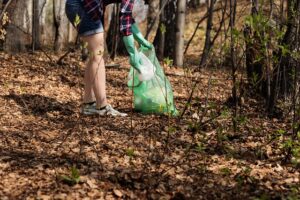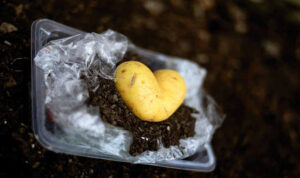Globally plastic pollution is one of the hard to deal with the menace in terms of solid waste management. Many governments across the world have tried to put up legislation that governs and controls the manufacture and consumption of plastic wastes. It can be deduced that plastic pollution is a major global upset, threatening marine life thus causing both forms of pollution (physical and chemical pollution). Below are top 10 Scientific Solutions to Plastic Pollution
1. The Plastic-Eating Enzyme.
This technology was first discovered by the Japanese scientists in 2016, where they discovered an enzyme and named it Ideonella Sakaiensis 201-F6 which is able to eat up the PET (Polyethylene terephthalate) the major compound making up plastics. The technology has been refined and improved by scientists globally and has improved its speed of synthesis by 20%. This has significantly been applied to reduce the pollution caused by these plastic pollutants.
2. The Ocean Clean-Up Technology
This technology on control of plastic pollutants was developed by 16 years, Boyan Slat, who was sea diving while on vacation in Greece. He was struck by the number of plastics he saw floating around which prompted the development of a 600m meter long structures floating on the water surface to rake out the debris and deposit in a containment boom. This technology has led to the emergence of other various versions that have been widely used to contain the mess caused by plastic pollutants around the globe.
3. Converting Plastic into Fuel.
Statistics have shown that over 300million tonnes of solid waste in the form of plastics are produced globally of which half can be taken through a recycling process. It is in the efforts to make useful remain half that such technologies as Catalytic hydrothermal reactor by Licella, a process whereby plastics are smelted into fuel.
4. Plastic Recycling Process
Plastic can be recycled in two major ways, chemical recycling; a process in which the plastic is broken down into monomers through a chemical reaction. The monomer is thus used as a construction block to another plastic material. Mechanical recycling is a widely used recycling method and involves chopping and washing of the plastics after which they are ground and smelted into different forms.
5. Use of Biodegradable Plastics (10 Scientific Solutions to Plastic Pollution)
This initiative has been inspired by the desire to achieve sustainability around the globe. This technology involves the use of renewable resources to replace conventional plastics use, this has, in turn, improved the recycling frequency thus improved solid waste management. The bio-based polymers are made of renewable feedstocks (biomass) which are independent of biodegradability.
6. Single-Use Plastic Bag Replacements with Non-Pollutant Alternatives.
This involves using more durable alternatives like baskets to replace single-use plastics. These single-use plastic bags are the major constituent of solid wastes. This initiative will reduce the rate at which people damp these bags which ends up in most cases the oceans and the drainages. Alternatives like canvas bags are strong, long-lasting, and cost-effective in the long run. This has significantly averted the pollution caused by plastic bags.
7. Embrace Reuse of Plastics Where Possible
Reuse of the bags for other purpose make less to go to pollution. Small plastic bags can be used as a tree nursery to nurture seedlings. The soil is poured into the bags and the tree seedlings are planted into them. In that way, they serve the environment better than throwing them away to end up polluting the water bodies. The plastics can also be built into a watering can, other storage containers and even bottle planter minimizing their probability of ending us as a pollutant.
8. Proper Disposal Systems Like Controlled Incineration
Incineration is the process of degrading the plastics by the use of heat. In the process, a lot of heat is generated which can be used as a source of energy and modified to power turbines or even heat homes. This is relatively a simple technology to adopt but needs some heavy investment if it has to last and be economically viable. It has significantly reduced solid wastes in big municipalities.
9. Plastic Use Ban (10 Scientific Solutions to Plastic Pollution)
Though not a scientific method, this initiative has played a very vital role in ensuring this menace is controlled. It involves constituting legislation that curtails the manufacturing and consumption of plastic pollutants. Many countries globally have affected this and are gradually yielding results. The mail call-out is for the rest of the countries to come on board in order to fully handle this menace globally.
10. Land-filling (10 Scientific Solutions to Plastic Pollution)
This is always treated as the last resort measure given the detrimental effects it has on the environment. In a well-integrated waste management system a combination of life residue can be recycled and incinerated before landfill is done to reduce the risk of contaminating on and pollution to the environment. Reclaimed landfill plastics can be taken through the gasification process after ascertaining that their heterogeneity, moisture content, and constituent impurities are within the acceptable range.
These are the top 10 Scientific Solutions to Plastic Pollution
Image by chenspec from Pixabay







Pingback: 10 Harmful Effects of Plastic Pollution on Human Health. - nPolluted